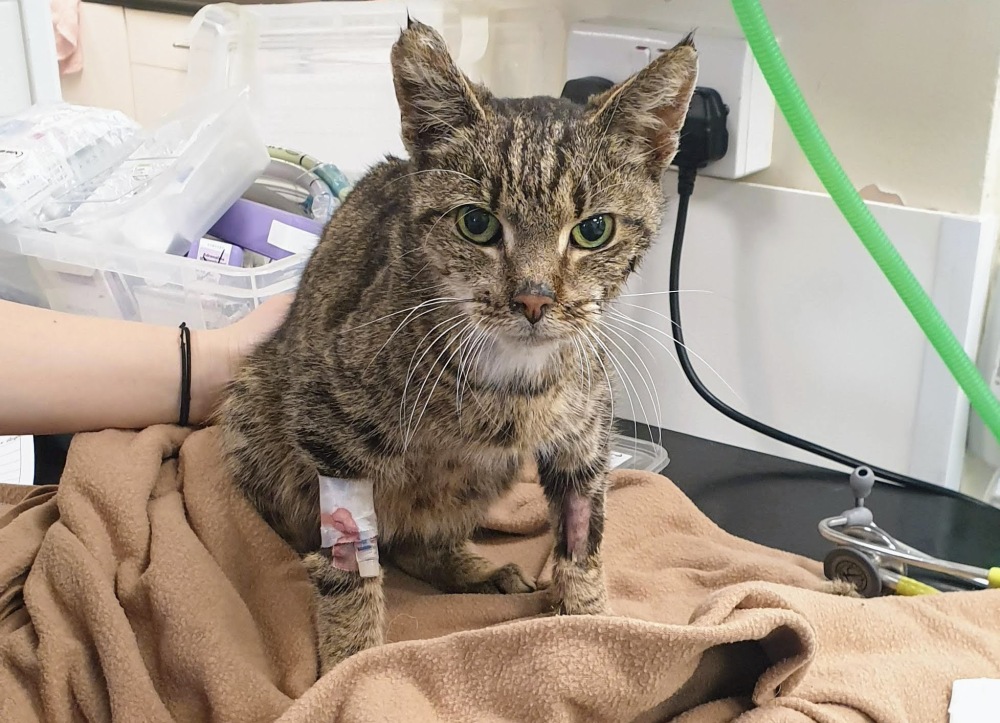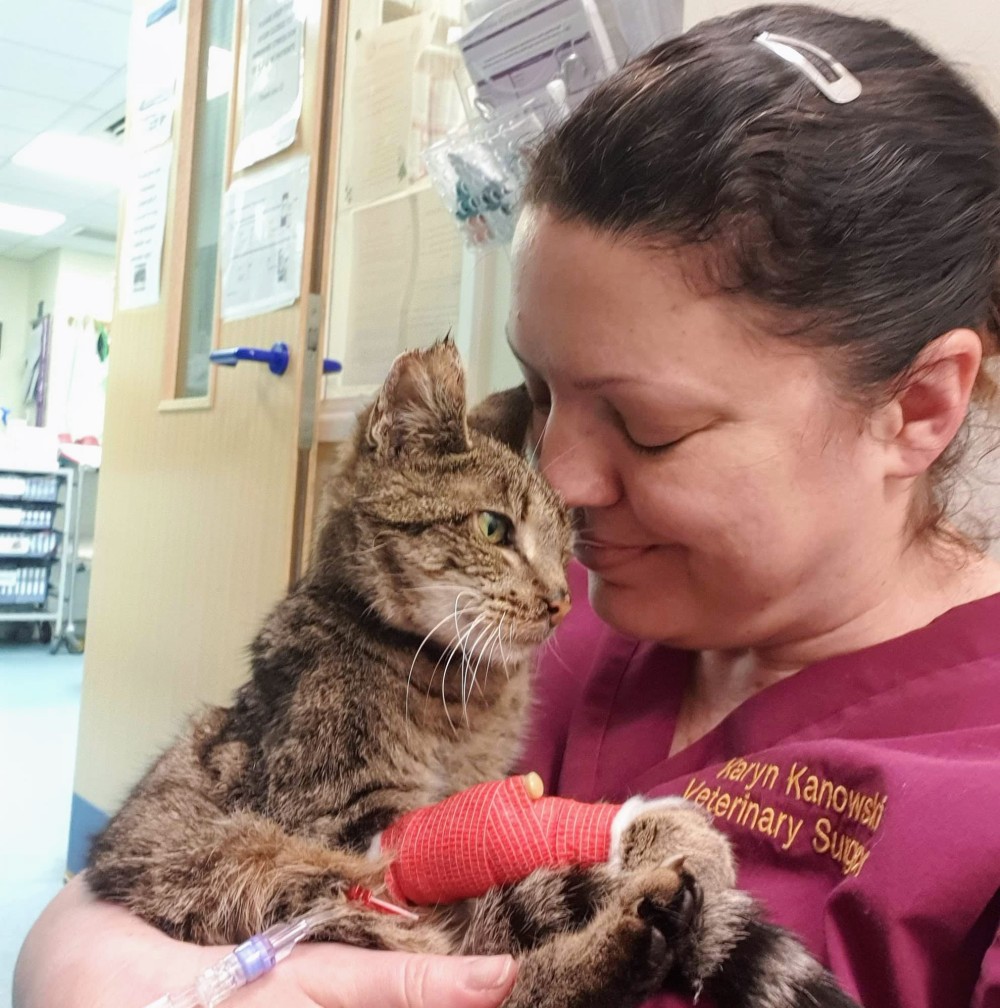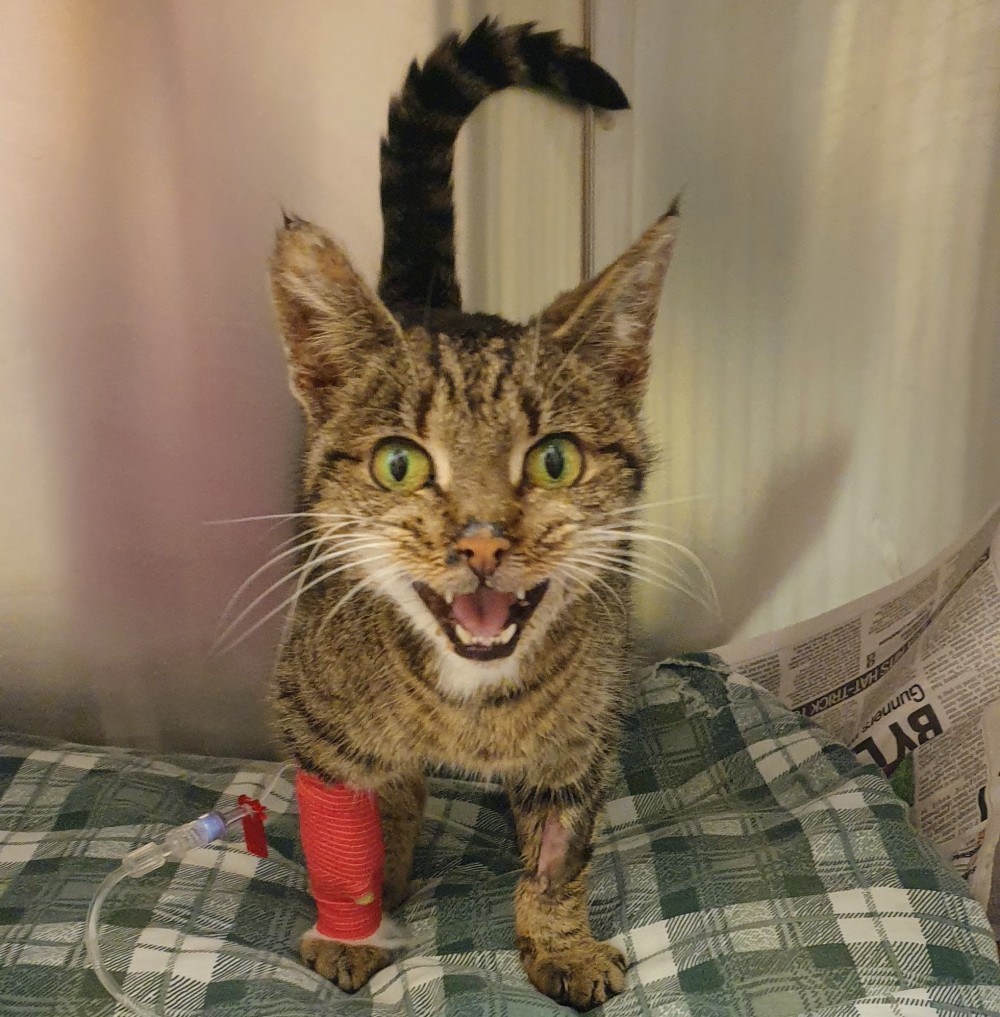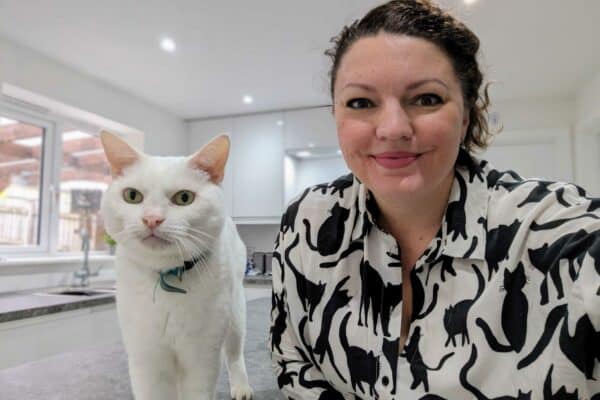Hi, I’m Dr. Karyn! Read my introduction to learn more about me and meet my five funny cats: Clutch, Cyril, Alex, Zelda, and Zazzles.
I want to let you in on a secret. The part of a veterinarian’s job they hate the most is not euthanasia. It does not deal with aggressive or extremely noisy, out-of-control dogs. It’s not trying to check a sharp-toothed, razor-nailed man who does nothing but scratch your eyes out and eat your entrails for dinner. It doesn’t even try to communicate a complex surgical procedure or medical condition to an owner while their five children under the age of four run screaming around the consulting room unrestrained and seemingly oblivious to their oblivious parents. , although that last child is just around the corner.
The part of a vet’s job they hate the most is about the money.
We all worked hard, studied hard, and spent hours and hours of our university holidays on practical placements because we love animals, and we want to help them in any way we can. No vet goes into this job for the money, and if they did, they obviously lost their way somewhere along the way! Veterinarians earn, on average, around USD $100,000 per year, placing us at number 86 on the salary rankings.1 I’m not suggesting that $100K is a small amount, but considering the amount of technical knowledge, skills, and responsibility involved in the position, the fact that it takes about 8 years of study , with typical university loans between $80-200K, believe me, we do it for the love of animals, not because we hope to get rich!

Where Does My Money Go?
The majority of veterinary practices are businesses. We are not funded by the government, and as you know, health care is expensive. Equipment, consumables, drugs, support staff, buildings, equipment, and ongoing training to stay current with techniques and information all cost money. And damn right, your vet deserves to be paid too!
One thing that has affected veterinary billing in the last decade or so is the rise of Veterinary Consolidators, like Mars, who have branched out from snacks and chocolates into the world of pet health care. This corporate giant now owns an astounding 3000 veterinary practices worldwide, 37 major pet food companies, including Royal Canin, Iams, Whiskas, and Sheba, 11 veterinary diagnostic companies, and has a controlling interest at major online pharmacies and veterinary suppliers.
What does this mean for pet owners?
- This means that your local independent veterinary practice could be bought by a rich company without you knowing about it, because they cleverly hide all the original branding and signage, so that their corporate ownership is only visible to fine print.
- This means that on top of all the ordinary costs faced by a veterinary practice, any profits have to be poured into the pockets of shareholders and board members, who now control the price of your pet’s veterinary care, leaving the vets and support staff to deal with. the backlash from rising prices.
- This means that no matter how angry or frustrated you may feel when the cost of veterinary care increases, your veterinarian, even the practice owner, has no control over prices.
Why are veterinary practices being sold to these corporations? Because the competition they create in the market makes it almost impossible for independent practices to stay afloat.

What does this have to do with insurance?
Yes – let’s get back on track. Along with everything else, the price of pet insurance continues to rise, leading many pet owners to make the difficult decision to cancel their policies or switch to a cheaper company, but here are the problems with that decision:
- Many of the companies that offer lower premiums will
- increase the amount of their coverage every year, and every time a claim is made.
- only pay for certain conditions, and can only pay a very limited amount per condition.
- only covers one condition for 12 months, which is fine if it’s a one-time injury or illness, but if it’s something that might come back later in life, or a lifelong condition, like diabetes, a 12 – the moon policy won’t help much.
- If you switch companies, any conditions noted in your pet’s history will not be covered. For example, if your cat developed a painful knee when he was 2 years old and then needed surgery on that knee five years later, if you changed companies during that time, you would not be covered for the surgery.
- If you cancel your insurance policy due to affordability, there is very little chance that you will be able to pay for a treatment or surgery that could cost thousands of dollars.
- Pet insurance companies usually have a minimum 14-day no-claims period, so if you think you can just take out a policy when you notice a problem with your pet, it doesn’t necessarily work.
As a vet, there are obviously things I can do for my own pets, even if it’s not always easy to separate myself from them to actually do it! But all my pets are covered by pet insurance, because I know that the things I can’t do will be expensive! As you may know, I have five cats (and five dogs), so pet insurance is a big expense every month, but it’s something we’re committed to paying for by getting these pets. We choose not to have any of the big television subscriptions, we save a lot when it comes to grocery shopping, and we regularly buy and sell on Facebook Marketplace (which is also great from a sustainable perspective). I know we are in a better financial situation than many people, but the point I want to make is that if you have a pet, I strongly urge you to look at where you can sacrifice a monthly expenditure. room for pet insurance.
Our cats rely on us to take care of them, and by adopting them, we say that we are giving them the best care we can, and unfortunately, that care is that becomes more expensive. Trust me, I know how frustrating it can be to see your pet insurance premiums show up in your bank account every month, when it’s something you’ll (hopefully) never use; I estimate that we have spent over $15,000 on insurance for our current group of cats, and have never made a claim! But if something happens to your beloved cat, and you’re looking at a vet bill of $3000 or more, you’ll be very grateful to know that $15-20 a month is for insurance.
When Sparky was brought to our clinic a few years ago after running away and being hit by a car, we didn’t know if he would make it; he needed major surgery to repair his broken pelvis and jaw, with an estimated cost of around $4000. Luckily, Sparky was microchipped and we quickly contacted his owners, and they said the words every vet wants to hear in this situation: “okay, he’s insured.”

As veterinarians, we don’t make money from insurance, and the one and only reason we highly recommend it to our clients is that, when the worst happens, we want to do everything we can to help get them back to health. your cat and get home. yours. We know prices are rising, and we know how much stress can add to a difficult situation. Trust me, your vet doesn’t want to talk about money when your cat is in trouble, but you know what we want to hear?
Don’t worry, we have pet insurance.
We hope you never need it, but if something goes wrong, you’ll be glad you did.




